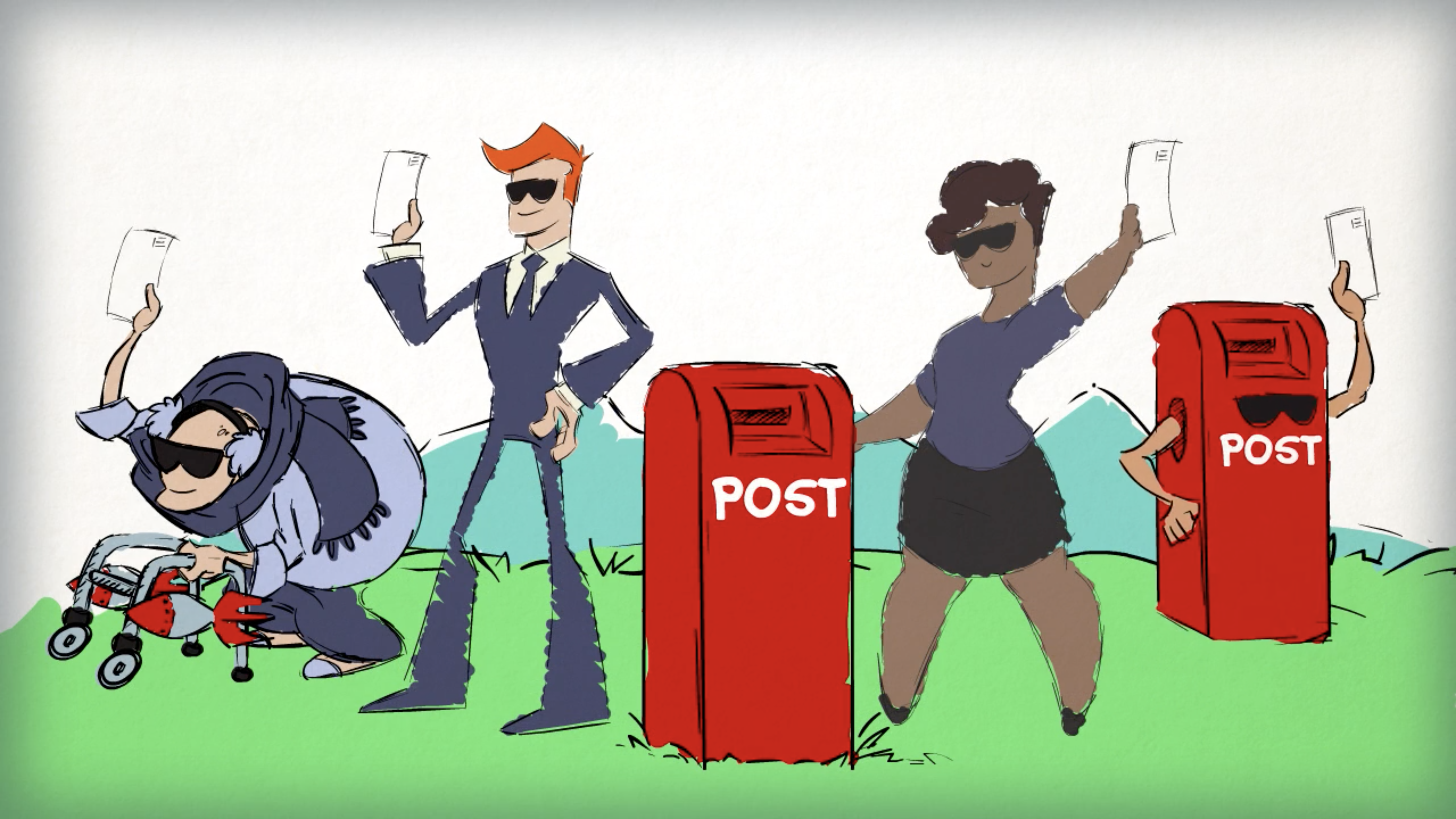You can use a pen, pencil or felt pen when marking your ballot paper, as long as your numbers are clear.
We supply pencils in polling places because they last well between elections and can always be sharpened.
Section 289 of the Local Government Act 1993, requires the council ballot papers to contain two instructions:
The more preferences you mark, the longer your ballot paper can stay in the count.
Here's a real-life example:
At the 2009 Launceston City Mayor election between three candidates, the result was decided by three votes.
399 ballot papers could not be included in the final decision because they did not show a second preference - they droppped out of the count once the first preference was used. If some or all of these electors had recorded a second preference, the margin or result could have been very different.
Yes you can. Under section 300(2) of the Local Government Act 1993, a ballot paper can be counted if the elector’s intention is clear.
In other words, as long as the electoral official or returning officer can identify which candidate has been given each of your preferences the ballot paper can be included in the count.
Completing your ballot paper when there is a large field of candidates can be difficult.
One handy tip is to use the information booklet as a place to make notes or even give a 'grade' for each candidate as you read. This may help you decide how to allocate your preferences.
As time runs out, you may want to take your vote to one of these locations, during their normal business hours:
| Council Office | Additional location |
| Break O'Day Council office 32-34 Geroges Bay Esplanade, St Helens |
|
| Brighton Council office 1 Tivoli Road, Old Beach |
|
| Burnie City Council office 80 Wilson St, Burnie |
|
| Central Highlands Council office 6 Tarleton St, Hamilton |
|
| Circular Head Council office 33 Goldie St, Smithton |
|
| Clarence City Counci office 38 Bligh St, Rosny Park |
|
| Derwent Valley Council office Circle St, New Norfolk |
|
| Devonport City Council office paranaple centre, level 2, 137 Rooke St, Devonport |
|
| Dorset Council office 3 Ellenor St, Scottsdale |
|
| Flinders Council office 4 Davies St, Whitemark, Flinders Island |
|
| George Town Council office 16-18 Anne St, George Town |
|
| Glamorgan-Spring Bay Council office 9 Melbourne St, Triabunna |
|
| Hobart City Council centre 16 Elizabeth St, Hobart |
Hobart City Council Town Hall, Macquarie St, Hobart |
| Huon Valley Council office 40 Main St, Huonville |
|
| Kentish Council office 69 High St, Sheffield |
|
| King Island Council office 10 George St, King Island |
|
| Kingborough Council office 15 Channel Highway, Kingston |
Bruny Island Service Centre 3893 Main Rd, Alonnah |
| Latrobe Council office 170 Gilbert St, Latrobe |
|
| Launceston City Council office Town Hall, 18-28 St John St, Launceston |
|
| Meander Valley Council office 26 Lyall St, Westbury |
|
| Northern Midlands Council office 13 Smith St, Longford |
|
| Sorell Council office 47 Cole St, Sorell |
|
| Southern Midlands Council office 71 High St, Oatlands |
Kempton Service Centre 85 Main St, Kempton |
| Tasman Council office 1713 Main Rd, Nubeena |
|
| Waratah-Wynyard Council office 21 Saunders St, Wynyard |
Waratah Service Centre Smith St, Waratah |
| West Coast Council office 11 Sticht St, Queenstown |
|
| West Tamar Council office 6 West St, Beachonsfield |
2-4 Eden St, Riverside |
| Tasmanian Electoral Commission office Level 3, 169 Main Rd, Moonah |

Between the 8th and 12th of October, keep your eye on the mailbox for your ballot pack

This means there is a 'polling period', rather than one polling day as for State Parliamentary elections. Every elector receives their very own postal ballot pack at their enrolled postal address. You then have around 3 weeks to complete and post your vote back to the returning officer for your council. The polling period for the 2018 elections is from the week of the 8th October to 10am Tuesday 30 October 2018.
When voting, be aware that successful candidates for mayor and deputy mayor must also be elected as councillors to be able to accept the office of mayor or deputy mayor.
Watch this animation about postal voting in Tasmanian local government elections.
Following the announcement of candidates at 12 noon Tuesday 25 September, postal ballot packs are prepared, printed and packed for posting to electors.
All electors will receive postal ballot packs in their letterboxes approximately two weeks after the announcement of candidates. Delivery will be during the course of the week commencing Monday 8 October.
The postal ballot pack contains:
Electors have around three weeks (including three weekends) to complete their ballot paper and return it by 10am Tuesday 30 October so that it can be included in the count.
To have their vote counted electors must:
The close of polling is 10am Tuesday 30 October.
The election calendar - enrolment close, nomination period, polling period...
Learn moreMap of Tasmania's local government (municipal) boundaries.
(PDF opens in new tab)
The elections begin with the enrolment period and the issue of the ...
Learn more